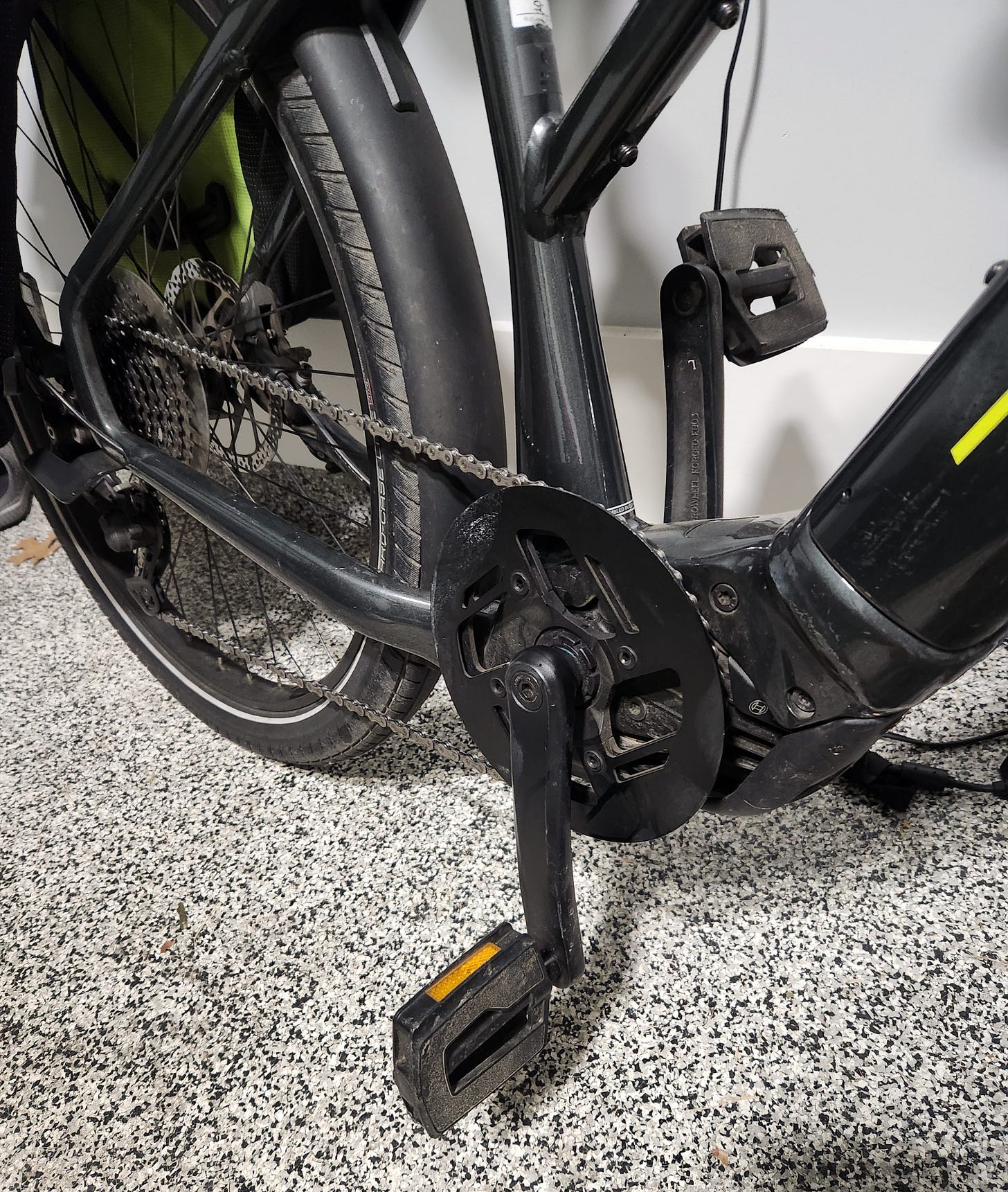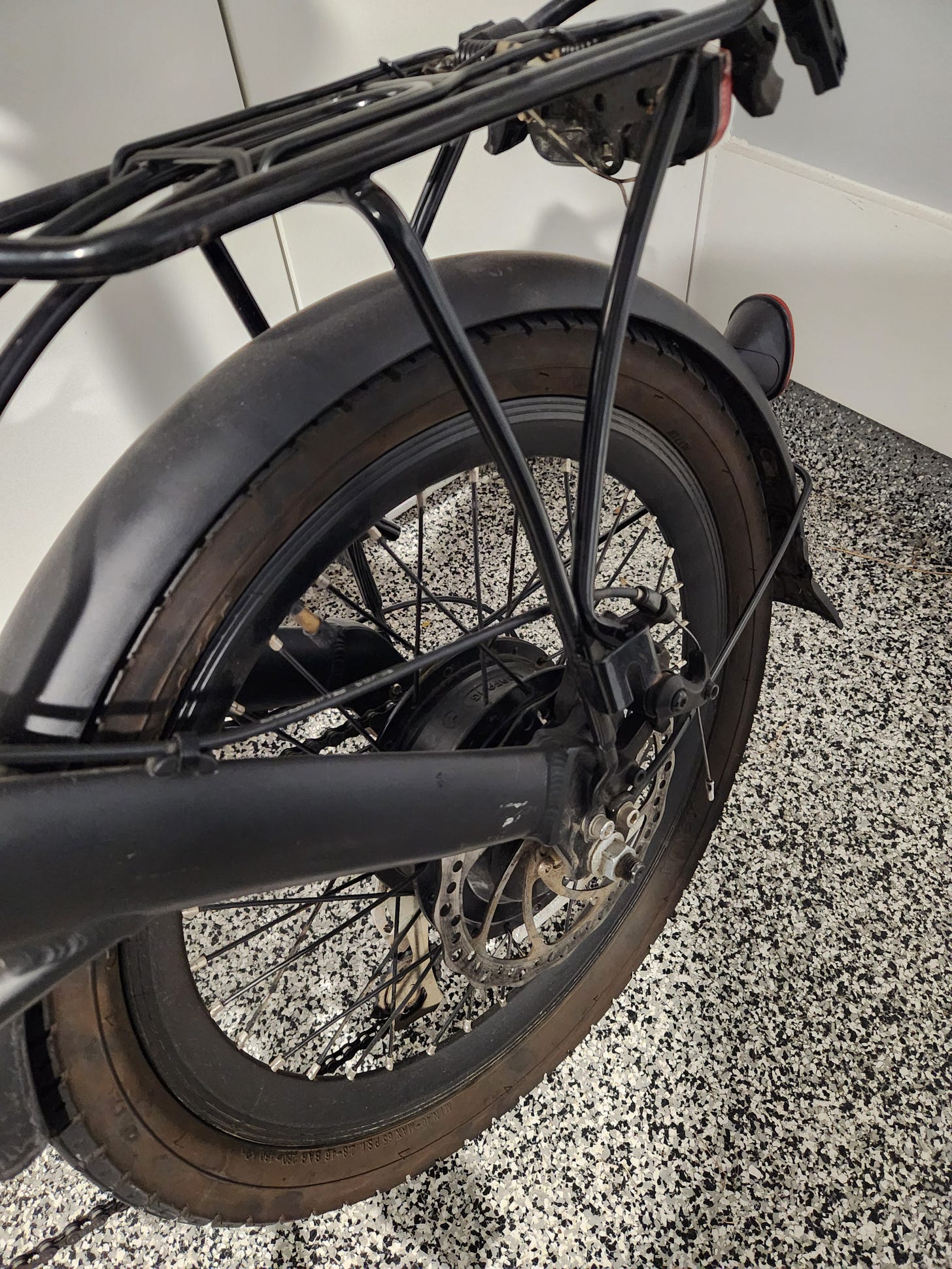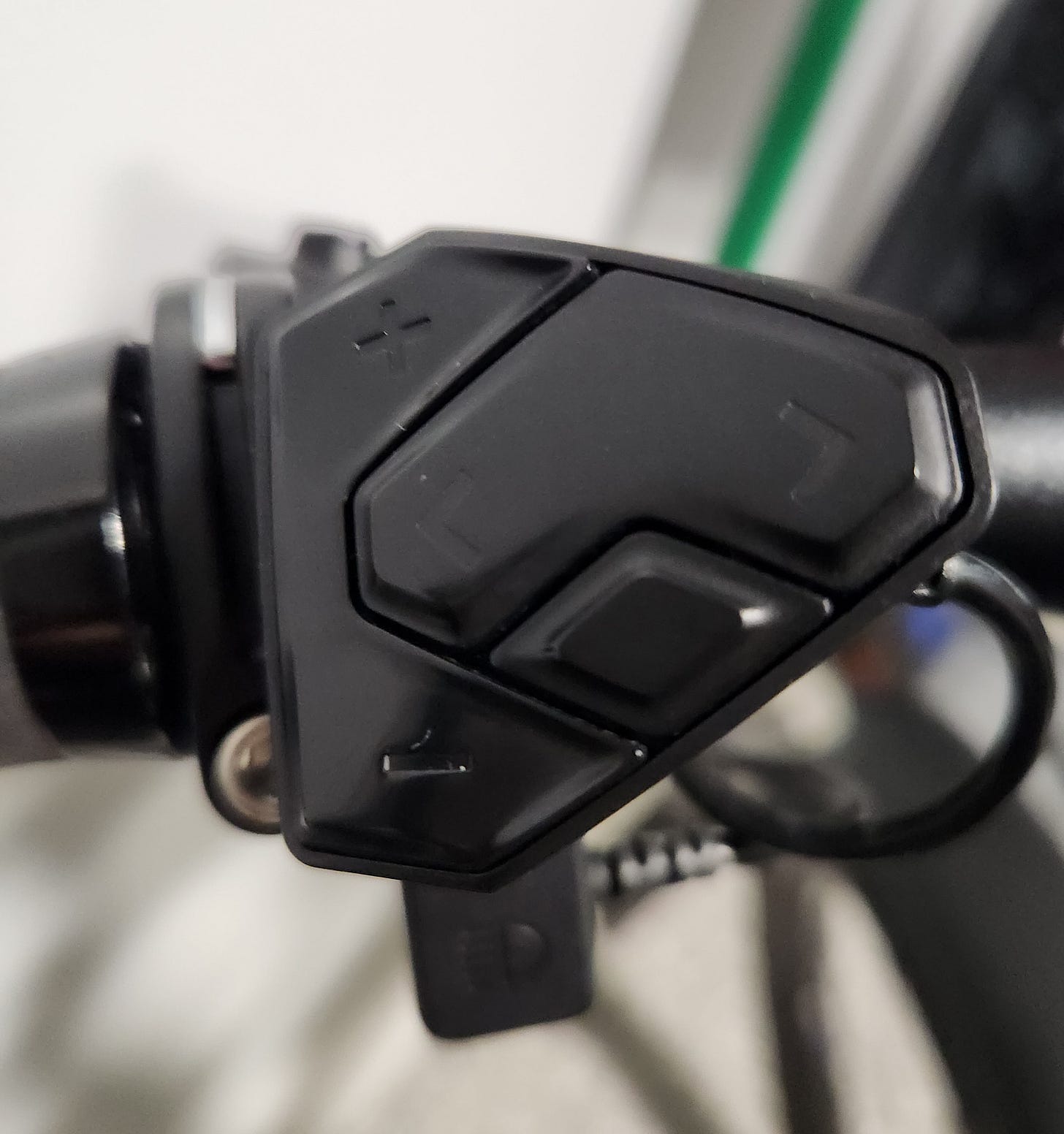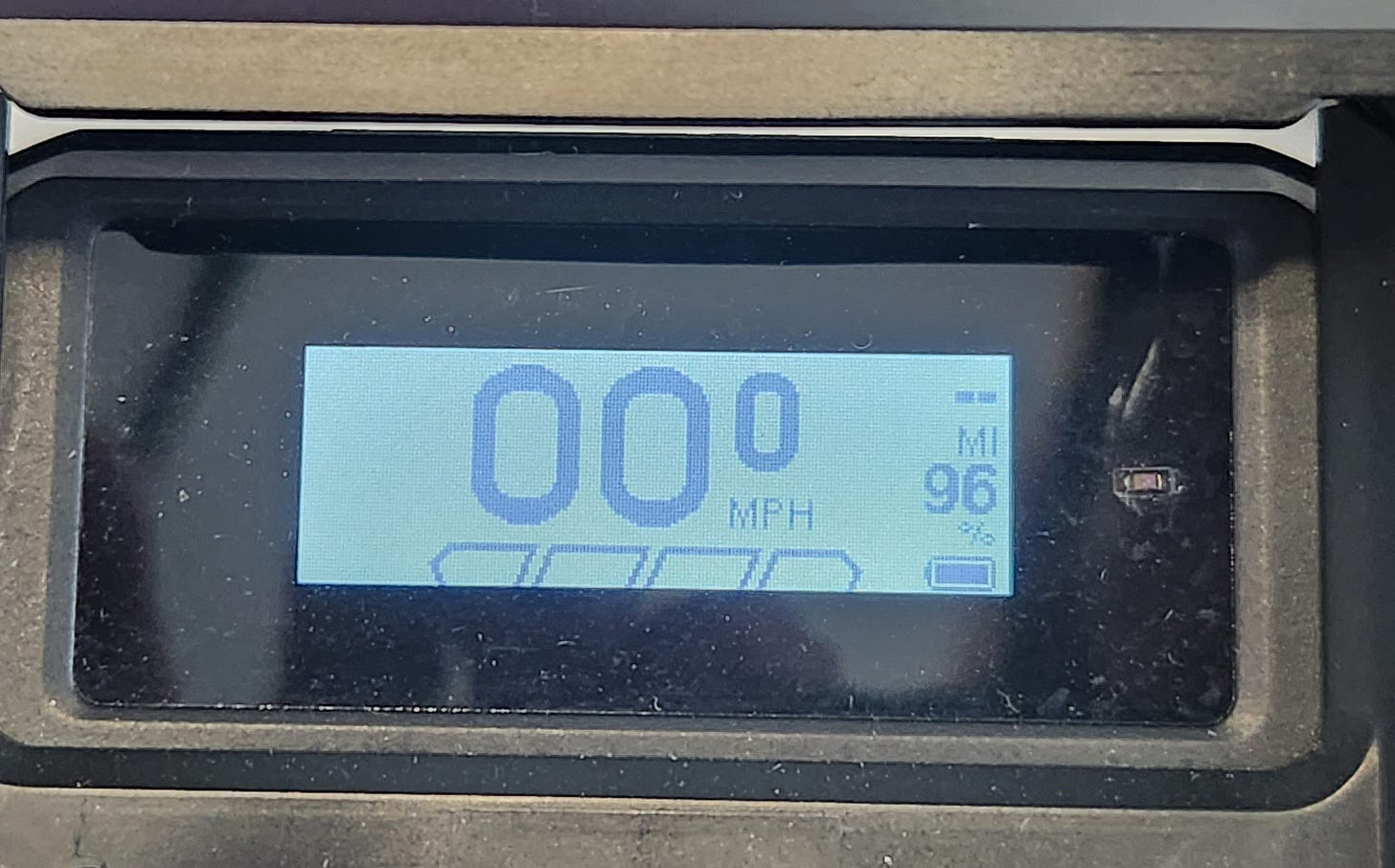Is there an e-bike in your future?
The average age of an e-bike rider is 48, practically old enough to warrant membership in the Age-defying Athletes Project (ADAP). (Source: Transportation Research Interdisciplinary Perspectives)
Thus, for men and women – whether or not currently playing sports in later life – an e-bike may be an exceptionally excellent fit.
Electric assist bikes are useful in two interrelated ways:
(a) in and of themselves, they are effective exercise tools, strengthening the muscles surrounding the joints and bones of the lower body while invigorating arms, chest, and shoulders;
(b) bicycling is one of the few sports that can be pursued concurrent with completing practical activities such as local errands, visiting friends, going to the movies, or doing dozens of other tasks that would otherwise guzzle gas, frustrate with traffic congestion, and drive to despair about parking.
Start your mind rolling with the following few scattered thoughts about this “light electric vehicle” class.
What is an e-bike?
As its name suggests, an electric assist bicycle (or boosterbike, as they say in the UK) is a pedal cycle which has been designed to house a power system. The power makes it easier to pedal.
And just as with non-assist bikes, an e-bike must be pedaled to move. It’s not a scooter or a motorcycle. (However, in the “Motors” section below, this statement will be modified somewhat!)
E-bikes come in all the flavors of traditional (or “acoustic,” for you guitar lovers) bicycles: city, road, mountain, folding, cargo. There are e-bikes for kids. Even adult tricycles are electrified.
Thus far, however, no electrified racing bicycles have been located – but stay tuned.
All e-bikes have a motor, a power source (typically an on-board rechargeable battery), and a controller. They also contain gears, and the combination of gears plus power generates good cycling through lots of hills, dales, and flat lands.
Devil in the details
Despite these simple factors, e-bikes come in a dizzying array of options.
Motors
Consider first the motor. Generally, motors are rated from 250-1000 watts. What type of riding will you do? If it will transpire over fairly level land, a motor at the lower end of the range should be fine. Hilly areas, however, will benefit from a 500-750 watt motor.
Motors can be placed inside the hub of the front or rear wheel, or in the middle of the machine, alongside the crank (a mid-drive motor).
Mid-drive motors provide a ride very similar to that experienced on an acoustic cycle.
Hub motors drive the wheel to which they are attached, meaning that a bike can be pushed from the rear or pulled from the front. These phenomena can create instability under certain circumstances.
A mid-drive motor is more stable than one on a hub because it is close to the center of gravity of the machine. It also sways less as the bike is pointed this way and that.
Despite this balance advantage, some riders prefer hub motors because they are throttle-type machines. That is, the motor provides pedal assistance, but also the option to propel along without pedaling (similar to the experience of riding a motorcycle).
True story: Years ago, in California, a pedal fell from the crank on an e-bike ridden by a dealer about ten miles from home. With one foot on the remaining pedal and the other on the down tube, he used the throttle to power his return. While this extricated him from a sticky situation, it almost burned out his battery!
Another issue with throttles is the very motor placement that enables them – front or rear wheel hub. If a throttle is improperly (i.e., too aggressively) engaged, it can spin one wheel faster than the other, lifting the opposite wheel off the ground.
Throttles are not entirely inimical, however. A common use case for the device is to engage the vehicle upon start up. That’s because hub motors usually require a turn or two of the crank before they fire.
Additionally, mountain bikers often prefer throttle bikes for that extra boost of power required for suddenly steep terrain, or to quickly avoid impediments like rocks and stumps.
Throttles can be helpful, but they definitely require practice, lots and lots of practice.
Batteries
E-bike batteries come in a variety of voltages. The more volts, the more power, all things being equal (which, given wind, rider energy, terrain, and other factors usually are unequal).
A simple way to think about how far a battery will take you is that for an average lithium ion battery weighing 6-8 pounds, you can anticipate covering about 20 miles.
For tackling errands within ten miles of your house, this typical battery will function well. If, however, you envision a longer ride of a hundred miles or so over several days, you will need to plan stops with electrical outlets (most e-bikes run on standard household current). Shades of the early days of the Nissan Leaf.
Controllers
The controller is the bike brain, as it essentially translates an assist request to the battery which sends umph to the motor. Controllers consist of complex wiring and parts, but can be simply engaged by pressing buttons on the handlebars. There are four levels of assist (sometimes five) – from light to vigorous, often described as “eco”, “tour”, “sport”, and “turbo”.
The rider can slide up or down these assist levels. The combination of assist plus a certain gear provides a wide range of pedal power for the rider.
Other e-bike considerations
Brakes - Since e-bicycles can attain speeds exceeding those of manual models, disc brakes are a good idea. They are stronger than “V” type brakes, and are advantageous in wet conditions.
Riding conditions - Speaking of dampness, is it OK to ride an e-bike in the rain? Well, it depends. On a well-made e-bike, battery, motor, and connecting wires are sealed and can survive a light shower. If, however, the rider encounters a thunderstorm, or even tries to speed across a creek, problems are likely to occur. Always dry the bicycle upon returning home – and pay attention to forecasts!
Fit – Generally, determining the “fit” of an e-bike will be similar to doing so for a non-assist model. And e-bicycle saddles can also be adjusted up and down to customize the fit even more. Additionally, the trend seems to favor step-through rather than horizontal top (i.e., leg swing over) design. An advantage for creaky joints!
Shocks - Front and rear shock absorbers are worth the investment – especially for older bones, cartilage, ligaments, tendons, and muscles.
Weight - E-bikes are definitely heavier than acoustic versions – some weighing in at a hefty 55 or 65 pounds. It’s important to keep this in mind for several reasons:
· First, back in the day, you could probably flip your 20-pound Specialized in and out of your car trunk with ease, facilitating taking it to the shop for maintenance, or driving with it for a long weekend of bike touring.
· With a bike that weighs three times as much, more planning will be required. For instance, consider purchasing an e-assist bike at a nearby retailer, preferably one to which you can just ride for routine maintenance.
· That weight is another reason to have quality disc brakes. Your 55 pound electric will take longer to stop than your 20 pound skinny tire.
Price - E-bikes also cost more than their conventional brethren. Average price for an entry-level model ranges from $1500-2500.
Display – feedback on assist level, battery level, speed, and other metrics. Most will accommodate a cell phone for better resolution and more information.
WIIFY?
In 2022, 1.1 million e-bikes were sold in the US – four times as many as in 2019.
This growth is not surprising, as men and women in later life (as well as in earlier life!) are discovering the joys of cycling with assistance.
E-biking is great exercise, transports the rider to the out of doors, makes quick work of chores, and offers a time-out to the cares and worries of everyday life.
Is there an e-bike in your future?
As with all marvelous promises, a trial is instructive. Visit a local retailer and test drive one or more models.
If an e-bike merchant isn't conveniently located, borrow a cycle from a friend. Perhaps your local fitness center has loaners.
If those are not practical, find an online retailer with a return policy of at least ten days. Test your online candidate on dry, smooth, flat surfaces, and wipe it down carefully prior to returning (if that's how things turn out).
Remember, it's just coffee- you aren't marrying that e-bike just yet.
But if you do take your vows, allow ample time to adjust to the idiosyncracies of your new road-mate.
And remember: E-bikes don’t have an “self-driving” feature like some electric cars – not yet, anyway. But who knows what the future will bring?





